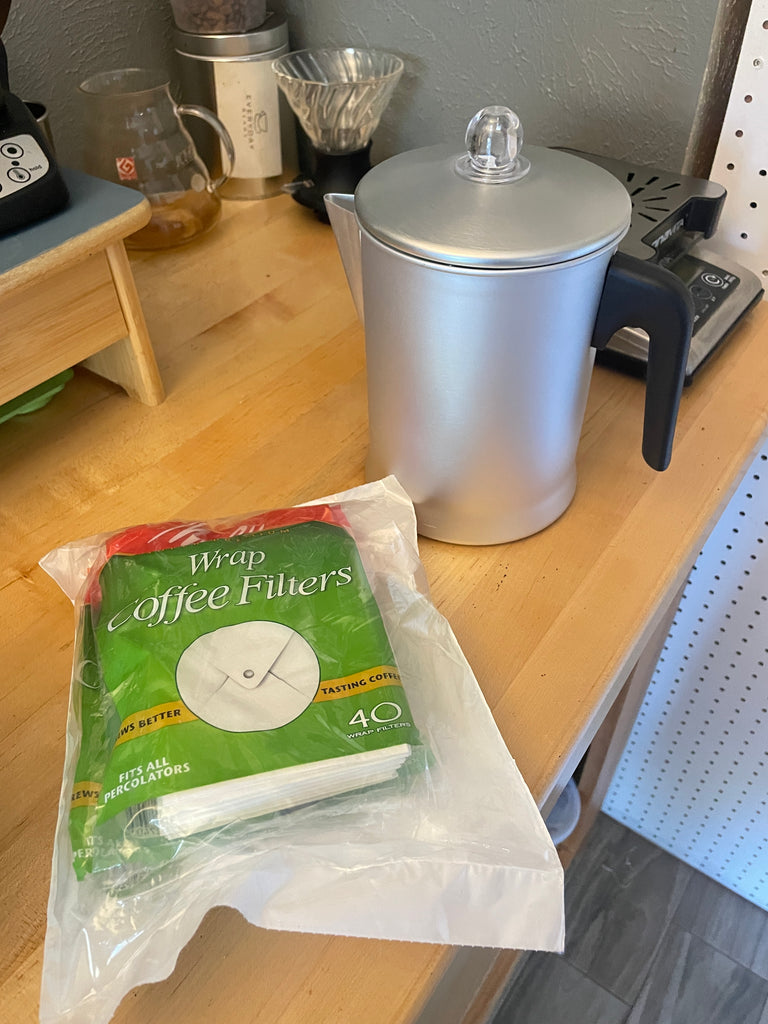The Percolator Renaissance: Rediscovering a Misunderstood Brewing Method

In the ever-evolving world of specialty coffee, we often find ourselves chasing the newest, trendiest brewing methods while overlooking time-tested classics. The percolator, a brewing device that has warmed countless homes and gatherings for generations, often finds itself dismissed by modern coffee enthusiasts. However, this overlooked brewing method deserves a serious second look from the specialty coffee community.
Understanding the Basics
At its core, a percolator operates on a simple yet effective principle. Hot water rises through a tube, spreads over a perforated basket containing ground coffee, and filters back down to repeat the process. This continuous cycling creates a unique brewing environment that, when properly controlled, can produce remarkably good coffee.
The key to excellent percolator coffee lies in understanding and controlling a few crucial parameters. Through extensive testing, a medium grind size paired with a 15:1 water-to-coffee ratio has proven to be a reliable starting point. The brewing time, typically around 20 minutes, allows for proper extraction while maintaining temperature control through careful heat management.
Breaking Down the Science
Recent experiments with a Peruvian medium roast (scoring 60-61 on the color meter) demonstrated the percolator's capability to handle even challenging beans. The resulting brew achieved a TDS (Total Dissolved Solids) reading of 1.88-1.99, indicating a 23-24% extraction yield. While this might seem high by conventional standards, the taste profile remained remarkably balanced during the hot and cooling phases.
The Art of Percolator Brewing
To achieve optimal results with a percolator, consider these key factors:
- Grind Size: Start with a medium grind. Too fine can lead to over-extraction and bitterness, while too coarse might result in weak coffee.
- Water Temperature: Maintain sufficient heat for percolation but avoid excessive boiling. The key is finding the sweet spot where the coffee percolates steadily without aggressive bubbling.
- Timing: While 20 minutes might seem long compared to other brewing methods, this duration allows for proper extraction and development of flavors. However, this can be adjusted based on your preferences and the coffee you're using.
- Filtering Options: Modern percolators often accommodate paper filters, which can enhance clarity and clean cup characteristics. However, brewing without filters is perfectly acceptable and can produce excellent results.
Challenging Coffee Stigmas
The specialty coffee community's tendency to overlook certain brewing methods raises important questions about inclusivity and accessibility in coffee culture. The percolator represents more than just another way to brew coffee; it symbolizes the importance of keeping an open mind and challenging our preconceptions about what makes "good" coffee.
Consider these advantages of percolator brewing:
- Accessibility: Quality percolators are available at various price points, making them accessible to most coffee enthusiasts.
- Simplicity: The straightforward design means fewer components that can break or require maintenance.
- Versatility: Percolators can handle different roast levels and bean origins effectively.
- Consistency: Once you dial in your preferred parameters, results are remarkably consistent.
Experimentation and Innovation
The path to great percolator coffee involves experimentation. Here are some variables to consider:
Time Intervals
- 10 minutes: Lighter extraction, brighter flavors
- 15 minutes: Balanced extraction, full flavor development
- 20 minutes: Fuller body, deeper extraction
Grind Adjustments
- Medium-fine: Increased extraction, fuller body
- Medium: Balanced extraction, versatile results
- Medium-coarse: Cleaner cup, reduced bitterness
Practical Applications
For those interested in exploring percolator brewing, here's a starting recipe:
- Use a 15:1 water-to-coffee ratio
- Start with a medium grind
- Heat water until percolation begins
- Reduce heat to maintain gentle percolation
- Brew for 15-20 minutes
- Monitor the strength indicator for consistency
The Future of Traditional Brewing
As we continue to advance in coffee brewing technology and techniques, it's crucial not to forget the valuable lessons traditional methods can teach us. The percolator reminds us that sometimes the most straightforward approaches can yield surprisingly sophisticated results.
Conclusion
The beauty of coffee lies in its diversity - not just in bean origins and roast levels, but in the myriad ways we can prepare it. The percolator's renaissance serves as a reminder that we should never stop questioning our assumptions about what makes great coffee.
Whether you're a seasoned barista or a curious home brewer, the percolator offers an opportunity to expand your coffee horizons. By approaching this classic brewing method with an open mind and applying modern coffee knowledge, you might discover that one of the most overlooked brewing methods could become your new favorite.
The key isn't to replace your current preferred brewing method but to add another tool to your coffee arsenal. After all, the joy of coffee lies not just in the final cup but in the journey of discovery and experimentation that leads us there.
Next time you're considering a new coffee brewing adventure, don't overlook the humble percolator. You might be surprised by what this classic brewing method can achieve when approached with curiosity and care.

Leave a comment